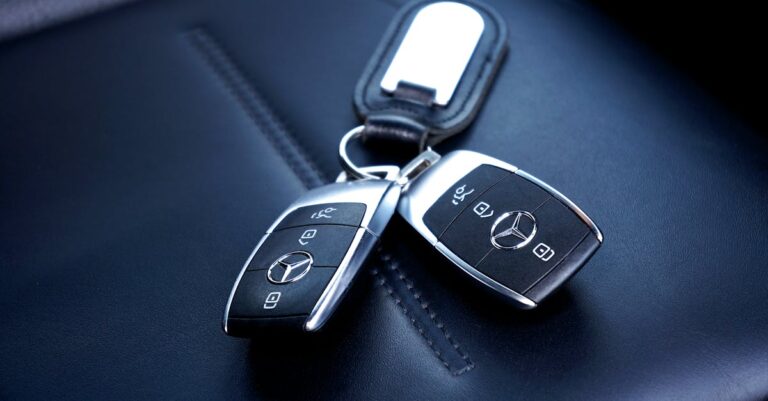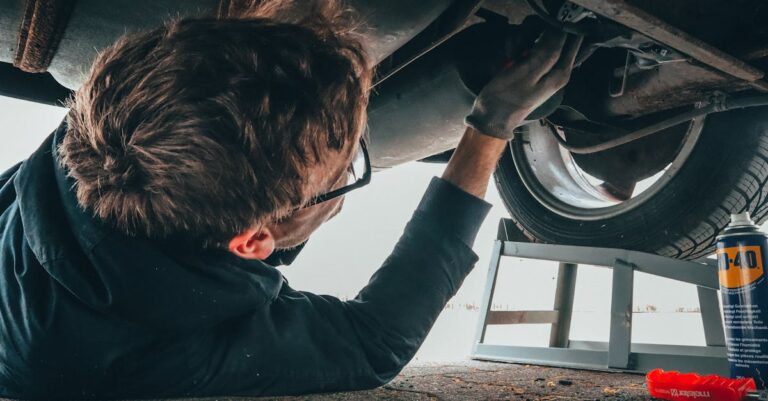Table of Content
Test Driving A Car: What To Check
Why the Test Drive is More Than Just a Spin Around the Block
Before You Even Turn the Key: Pre-Drive Checks
Exterior Walkaround: More Than Just Kicking Tires
Bodywork and Paint Inspection
Tires, Wheels, and Suspension Check
Interior Inspection: Your Future Command Center
Comfort and Ergonomics: Will It Fit You?
Checking Controls and Features (The Fun Part!)
Sniff Test and Cleanliness
Hitting the Road: The Driving Experience
Starting Up and Initial Feel
Performance Under Pressure: Acceleration and Braking
Handling and Steering: Feel the Connection
Ride Comfort and Noise Levels
Testing Specific Scenarios
Mimic Your Daily Commute
Parking and Maneuverability
Post-Drive Reflection and Questions
Conclusion: Making an Informed Decision
FAQs About Test Driving a Car
Article
Test Driving A Car: What To Check
So, you’re thinking about getting a new set of wheels? Exciting stuff! Browsing online, comparing specs, dreaming about that new car smell… it’s all part of the fun. But let’s be real, the pictures and fancy descriptions only tell half the story. The real make or break moment? The test drive. This isn’t just about taking it for a quick joyride; it’s your chance to really get under the skin of the car and see if it truly fits you and your life. Think of it like trying on shoes – they might look great, but if they pinch or rub after five minutes, you’re not buying them, right? Same goes for a car. Let’s dive into what you absolutely need to check during that crucial test drive.
Why the Test Drive is More Than Just a Spin Around the Block
Okay, let’s get one thing straight. A test drive isn’t just about confirming the car actually moves. It’s your single best opportunity to evaluate how the car feels, performs, and suits your specific needs before you commit potentially tens of thousands of dollars. It’s about assessing comfort, practicality, handling, and whether you genuinely enjoy being behind the wheel. You’re going to spend a lot of time in this vehicle; commuting, running errands, road trips… you want to make sure it’s a pleasant place to be. It’s easy to get caught up in the excitement, maybe the salesperson is charming, but focusing on a thorough check can save you from buyer’s remorse later. This is your time to be critical, ask questions, and really put the car through its paces.
Before You Even Turn the Key: Pre-Drive Checks
Hold your horses! Before you jump in and fire up the engine, take a few minutes to give the car a good once over, both inside and out. This pre drive inspection can reveal a lot about the car’s condition, especially if you’re looking at a used vehicle, but it’s important for new cars too (sometimes things get missed or damaged in transit).
Exterior Walkaround: More Than Just Kicking Tires
Yeah, kicking the tires is a classic move, but let’s get a bit more detailed. Do a slow walk around the entire vehicle. Look at it from different angles, crouch down, stand back. What are you looking for?
Bodywork and Paint Inspection
Scan each panel for dents, dings, scratches, or signs of rust (especially around wheel arches, door bottoms, and the trunk lid). Look for mismatched paint colors or uneven panel gaps – these could indicate previous accident repairs. Check if the paint finish is consistent. Are there waves or ripples? Run your hand gently over the surface. Does it feel smooth? Look closely at the seals around windows and doors. Are they cracked, brittle, or pulling away? These details matter for aesthetics, potential future rust issues, and hint at how well the car has been treated.
Tires, Wheels, and Suspension Check
Now, about those tires. Don’t just kick ’em! Check the tread depth – is it even across all tires? Uneven wear could signal alignment problems. Look for cuts, bulges, or cracks in the sidewalls. Are all four tires the same brand and size? Mismatched tires can affect handling. Peek at the wheels (rims) for curb rash, cracks, or bends. While you’re down there, glance at the suspension components visible behind the wheels. Do things look excessively rusty or damaged? Gently push down on each corner of the car. Does it bounce more than once or twice? Excessive bouncing could mean worn shocks or struts.
Interior Inspection: Your Future Command Center
Alright, let’s hop inside. This is where you’ll be spending most of your time, so pay close attention to comfort, functionality, and overall condition.
Comfort and Ergonomics: Will It Fit You?
Slide into the driver’s seat. How does it feel? Is there enough headroom, legroom, and shoulder room? Adjust the seat (height, forward/backward, recline, lumbar support if available) and the steering wheel (tilt, telescope). Can you find a comfortable driving position where you can easily reach the pedals and controls, and see clearly out of all windows and mirrors? Imagine yourself on a long drive – would you be comfortable? Check the passenger seats and, importantly, the back seats, especially if you regularly carry passengers. Is there enough space back there? Can people get in and out easily? Don’t forget the trunk! Open it up. Is it large enough for your typical cargo (groceries, luggage, sports equipment)? Is the loading lip high? Is the space practically shaped?
Checking Controls and Features (The Fun Part!)
Now for the buttons and gadgets! Systematically check everything you can touch. Turn on the ignition (without starting the engine yet) to power up the electronics.
- Lights: Headlights (low and high beam), taillights, brake lights, turn signals, hazard lights, interior lights. Get the salesperson to help you check the exterior lights if you’re alone.
- Wipers & Washers: Test all speeds, front and rear (if applicable). Do the washers spray effectively?
- Horn: Give it a quick toot.
- Windows & Locks: Operate all power windows and door locks from the driver’s controls and individually.
- Mirrors: Adjust the side mirrors electronically if they have that feature. Check the rearview mirror.
- Climate Control: Test the air conditioning (does it blow cold quickly?) and the heater (does it blow hot?). Check all fan speeds and vent modes (defrost, face, feet).
- Infotainment System: Turn on the radio. Check AM/FM/Satellite reception. Try connecting your phone via Bluetooth – does it pair easily? Can you make a call? Play music? If there’s navigation, check if it loads maps correctly. Test the touchscreen responsiveness. Play with the volume and tuning controls.
- Other Features: Test sunroof operation, heated seats, parking sensors, backup camera, steering wheel controls, cruise control, etc. Basically, if it has a button or a function, try it out!
Don’t rush this part. It’s easy to discover a non functioning feature *after* you’ve bought the car, which can be annoying and potentially costly.
Sniff Test and Cleanliness
Take a deep breath. What do you smell? Be wary of strong air freshener scents – they might be masking unpleasant odors like mildew, cigarette smoke, or pet smells. Mold and mildew often smell musty and can indicate water leaks. Check the carpets and upholstery for stains, tears, burns, or excessive wear. Look under the floor mats. Is it damp or stained underneath? Check the headliner for sagging or stains. A clean, well maintained interior generally suggests a car that’s been cared for.
Hitting the Road: The Driving Experience
Okay, the moment of truth! You’ve done your homework on the static checks, now it’s time to see how this machine actually performs on the road. Insist on a varied test drive route that includes different types of roads – city streets, maybe a highway or faster road, and some bumpy sections if possible.
Starting Up and Initial Feel
Turn the key or push the start button. Does the engine start smoothly and quickly, or does it crank excessively? Listen for any unusual noises immediately after start up – clicks, rattles, whines. Once running, let it idle for a moment. Is the idle smooth or rough? Check the dashboard for any warning lights that stay illuminated after the initial check. Put the car into gear (Drive or Reverse). Does it engage smoothly, or is there a clunk or hesitation? Release the brake – does the car creep forward (or backward) smoothly?
Performance Under Pressure: Acceleration and Braking
As you pull away, pay attention to the accelerator response. Is it smooth and progressive, or jerky? Find a safe place (like an empty stretch of road or an on ramp) to test acceleration. Press the pedal firmly (but safely!). Does the car pick up speed willingly? Does the engine sound strained or make odd noises under load? Does the transmission shift smoothly through the gears (automatic or manual)? Are there any hesitations or rough shifts?
Now, let’s test the brakes – arguably the most important safety feature. Find a safe spot with no traffic behind you. Apply the brakes firmly (but not slamming them, unless simulating an emergency stop safely). Does the car stop straight and smoothly? Does the brake pedal feel firm and responsive, or spongy and low? Listen for any grinding, squealing, or clicking sounds when braking. Does the steering wheel shudder when you brake?
Handling and Steering: Feel the Connection
How does the car feel going around corners? Take some turns at normal speeds. Does the steering feel direct and responsive, or vague and sloppy? Is there excessive body roll (does the car lean too much)? Does the steering wheel return to center easily after a turn? Listen for any clunks or groans from the suspension when turning or going over bumps. Try making a U turn (if safe and legal) – listen for clicking or popping sounds from the front end, which could indicate issues with the CV joints. Does the power steering feel smooth and consistent, or does it whine or feel heavy in spots?
Ride Comfort and Noise Levels
Pay attention to how the car absorbs bumps and imperfections in the road. Does it feel jarring and harsh, or composed and comfortable? A certain amount of feel is good, but you don’t want every pebble rattling your teeth. Listen carefully as you drive at different speeds. How much engine noise, wind noise, and tire noise intrudes into the cabin? Turn the radio off for part of the drive to really focus on this. Is it quiet enough for comfortable conversation or listening to music at normal volume, especially at highway speeds? Rattles and squeaks from the dashboard or trim can be incredibly annoying over time, so listen out for those too.
Testing Specific Scenarios
Beyond the general driving feel, try to simulate conditions you’ll encounter regularly.
Mimic Your Daily Commute
If possible, drive a route similar to your daily commute. Does the car handle stop and go traffic smoothly? Is visibility good for changing lanes? How does it perform on the specific types of roads you use most often (e.g., hills, highways, city streets)? This gives you the best sense of whether the car will be a good fit for your everyday life.
Parking and Maneuverability
Don’t forget to test how easy the car is to park! Try parallel parking or backing into a spot. How is the visibility out the rear window and mirrors? Does the backup camera (if equipped) provide a clear view and helpful guidelines? How tight is the turning radius? Is it easy to maneuver in tight spaces like parking lots or narrow streets? A car that feels great on the open road might be a nightmare in a crowded supermarket parking lot.
Post-Drive Reflection and Questions
Once you’re back at the dealership or seller’s location, don’t just hand back the keys and walk away. Take a moment to gather your thoughts while the experience is fresh.
- How did the car feel overall? Did you enjoy driving it?
- Did it meet your expectations based on your research?
- Were there any specific noises, vibrations, or issues that concerned you?
- How did it compare to other cars you’ve tested (if any)?
- Revisit the interior – did you notice anything new?
- Pop the hood (carefully, it might be hot!) and take a quick look. You don’t need to be a mechanic, but check for obvious leaks, frayed belts, corrosion on the battery terminals, or low fluid levels (coolant, brake fluid, oil).
- Ask the salesperson or seller any questions that came up during the drive. If they can’t answer, or seem evasive, that’s a red flag. Discuss any concerns you noted.
It’s a good idea to bring a notebook or use your phone to jot down notes immediately after each test drive, especially if you’re comparing multiple vehicles. What did you like? What didn’t you like? Be specific.
Conclusion: Making an Informed Decision
Phew! That might seem like a lot to check, but trust me, investing this time during the test drive is absolutely crucial. It transforms you from a passive passenger into an active evaluator. You’re not just kicking tires; you’re checking the vehicle’s pulse, testing its reflexes, and seeing if its personality meshes with yours. Remember, this car could be your trusty companion for years to come. By thoroughly checking the exterior, interior, features, and driving dynamics, and by simulating your real world driving conditions, you empower yourself to make a confident, informed decision. Don’t feel pressured, take your time, check everything on your list, and choose the car that truly feels right for you. Happy driving!
FAQs About Test Driving a Car
1. How long should a test drive be?
Aim for at least 30 minutes, but longer is often better, especially if you can incorporate varied road types (city, highway, bumpy roads) that mimic your usual driving. Don’t feel rushed; take the time you need to properly evaluate the vehicle.
2. Should I test drive multiple cars, even if I think I know which one I want?
Absolutely! Even if you have your heart set on one model, test driving its main competitors gives you valuable context. You might confirm your initial choice is perfect, or you might discover another car suits you even better. It also gives you leverage in negotiations.
3. Can I take the car on the highway during a test drive?
Yes, you should definitely try to include highway driving if possible. This allows you to check for acceleration at higher speeds, cruising comfort, wind noise, and stability. Just ensure you discuss the intended route with the salesperson beforehand.
4. What documents do I need to bring for a test drive?
You’ll typically need your valid driver’s license and proof of insurance. The dealership will likely make copies before you head out. It’s always a good idea to call ahead and confirm their specific requirements.
5. Is it okay to bring someone with me on the test drive?
Yes, bringing a friend, partner, or family member can be very helpful. They can offer a second opinion, check things in the passenger or back seats while you focus on driving, and help you remember details afterward. Just make sure their presence doesn’t distract you too much from your own evaluation.









